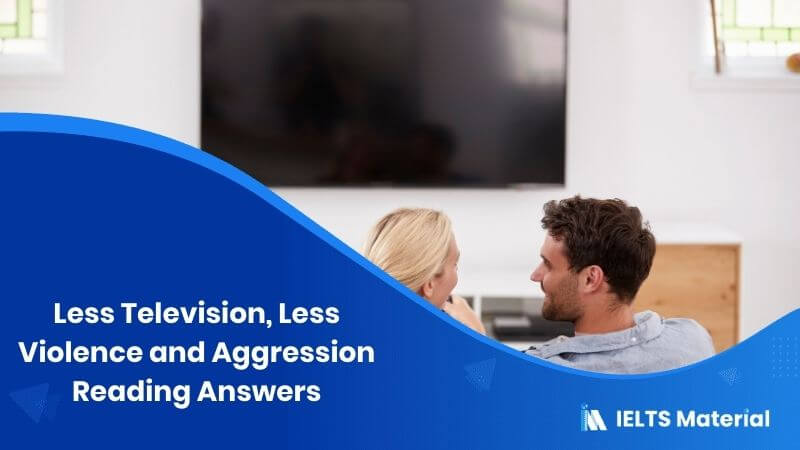The Mozart Effect Reading Answers
Table of Contents

Limited-Time Offer : Access a FREE 10-Day IELTS Study Plan!
This article contains The Mozart Effect reading answers.
The Mozart Effect is a real Reading test passage that appeared in the IELTS.
With diligent practice, the Reading Module can be the top-scoring category for IELTS Aspirants. To score well, you must understand how to approach and answer the different question types in the Reading Module.
By solving and reviewing Sample Reading Questions from past IELTS papers, you can ensure that your Reading skills are up to the mark. Take the practice test The Mozart Effect below and try more IELTS reading practice tests from IELTSMaterial.com.
Not sure how to answer IELTS Reading Matching Information questions? Check out the video below for the latest tips and strategies!
For more Summary Completion Questions practice, take a look at IELTS Reading Summary Completion Topic 1!
The question types found in this passage are:
Matching Information Questions
The Matching Information type of question is a list that contains information taken from the paragraphs. You are asked to find out the paragraph from which the information is taken. Sometimes the question may be tricky because the information given might not be in exact words as given in the paragraph instead it will be paraphrased so you need to read the paragraph to understand the meaning/idea behind it to answer these questions.
Summary Completion
In summary completion, you will be provided with a summary of information from a text, and there will be a few gaps. You will either get a list of words to be filled in the gaps or you could be asked to find answers from the reading passage. You will have to insert a few words from the text into the gaps. All of the information in the summary will also be available in the reading text. However, they will be using paraphrasing and synonyms. Thus, you cannot expect to find the exact words.
True/False/Not Given Questions
These questions are very tricky. True/False/Not Given question consists of several statements – If the statement is present in the article as it is then you need to mark it as true. If the statement is found to be the opposite of the sentence which is there then it should be marked as false. If the statement given in the question is not at all present in the article then it should be marked as not given. Do not spend a lot of time finding the sentence which is not there.
The Mozart Effect
You should spend about 20 minutes on Questions 1-13, which are based on the Reading Passage below. Find the practice test with The Mozart Effect PDF here.
Answers
1 Answer: D
Question Type: Matching Information
Answer location: Paragraph D, line 2
Answer explanation: Paragraph D states that “Neuroscientists suspect that music can actually help build and strengthen connections between neurons in the cerebral cortex in a process similar to what occurs in brain development despite its type. When a baby is born, certain connections have already been made – like connections for heartbeat and breathing.“ According to Neuroscientists music can help build and strengthen connections of neurons in the brain development of infants. Hence, music affects the brain development of infants by building and strengthing connections of neurons.
2 Answer: G
Question Type: Matching Information
Answer location: Paragraph G, line 2
Answer explanation: If you read clearly, it is mentioned that “after the Mozart Effect was published to the public, the sales of Mozart stayed on the top of the hit list for three weeks.” Since Mozart’s publication stayed on the top for 3 weeks we can infer that the public’s first reaction to the discovery of the Mozart Effect was positive.
3 Answer: B
Question Type: Matching Information
Answer location: Paragraph B, line 1
Answer explanation: If you read thoroughly, the opening line of paragraph B claims that “Frances H. Rauscher, PhD, first demonstrated the correlation between music and learning in an experiment in 1993.” This line from the passage provides information about the original experiment of Rauscher, which was about the correlation between music and learning.
4 Answer: A
Question Type: Matching Information
Answer location: Paragraph A, line 9
Answer explanation: A line in the said paragraph indicates “in Japan, compilations of music are used as medication of sorts.” Other countries such as Japan, use music for the healing purpose (medication of sorts).
5 Answer: F
Question Type: Matching Information
Answer location: Paragraph F, 2nd last line
Answer explanation: In the said paragraph, you can point out that “many people accredit the advanced learning of some children who take music lessons to other personality traits, such as motivation and persistence, which are required in all types of learning.” Here, the author says that music bestows other personality traits such as motivation and persistence which are very much required (needed) in all learning.
6 Answer: short
Question Type: Summary Completion
Answer location: Paragraph B, line 3
Answer explanation: The answer is clearly mentioned in the said paragraph and line. In the passage, it is said that “Groups of students were given intelligence tests after listening to silence, relaxation tapes, or Mozart’s “Sonata for Two Pianos in D Major” for a short time.” This line confirms that during the experiment conducted by Frances Rauscher, a group of students (subjects) was exposed to various music like listening to silence, relaxation tapes, or Mozart for a short time (period).
7 Answer: complex
Question Type: Summary Completion
Answer location: Paragraph B, last line
Answer explanation: A few lines in said paragraph discuss that the “Rauscher hypothesised that “listening to complex, non-repetitive music, like Mozart’s, may stimulate neural pathways that are important in thinking” (Castleman, 1994).” Hence, we can infer that Rauscher believes that enhancement in their performance is related to the complex nature of Mozart’s effect.
8 Answer: rats
Question Type: Summary Completion
Answer location: Paragraph C, line 1
Answer explanation: The opening line of paragraph C puts forward the information that “the same experiment was repeated on rats by Rauscher and Hong Hua Li from Stanford. ”
9 Answer: FALSE
Question Type: True/False/Not Given Question
Answer location: Paragraph B, last line
Answer explanation: If you read thoroughly, the author in the given paragraph mentions that “listening to complex, non-repetitive music, like Mozart’s, may stimulate neural pathways that are important in thinking.” It is mentioned how Mozart’s music and classical music have different effects. Also, this line confirms only nonrepetitive music helps in brain development.
10 Answer: FALSE
Question Type: True/False/Not Given Question
Answer location: Paragraph A, line 3
Answer explanation: The author in the given line recommends that “when a baby is born, certain connections have already been made – like connections for heartbeat and breathing. As new information is learned and motor skills develop, new neural connections are formed.” If the author is providing the information that connections are already made when the baby is born. It is incorrect to state that there is no neural connection made when a baby is born.
11 Answer: FALSE
Question Type: True/False/Not Given Question
Answer location: Paragraph F, line 1
Answer explanation: If you read thoroughly, there’s a line that claims, “if you’re a little sceptical about the claims made by supporters of the Mozart Effect, you’re not alone.” As the author is suggesting that if you feel a little apprehensive (sceptical ) about Mozart Effect then you’re not alone. Thus, we can state that there are many who question Mozart’s Effect.
12 Answer: NOT GIVEN
Question Type: True/False/Not Given Question
Answer location: N/A
Answer explanation: None of the passages confirms or denies that Michael Linton conducted extensive research on Mozart’s life.
13 Answer: TRUE
Question Type: True/False/Not Given Question
Answer location: Paragraph H, last line
Answer explanation: The answer is clearly mentioned in the said paragraph and line. In the passage, it is said that “if we approach this controversy from a scientific aspect, although there has been some evidence that music does increase brain activity, actual improvements in learning and memory have not been adequately demonstrated.” Music is also being used to assist in learning, in a phenomenon called the Mozart Effect. However, it is mentioned that memory improvement has not been adequately demonstrated, thus, it is true that there is not enough evidence in support.
Check More IELTS Reading Answers
Also check :
Practice IELTS Reading based on question types

Start Preparing for IELTS: Get Your 10-Day Study Plan Today!
Explore other Reading Topics

Janice Thompson
Recent Articles

Kasturika Samanta

Kasturika Samanta

Janice Thompson








Post your Comments